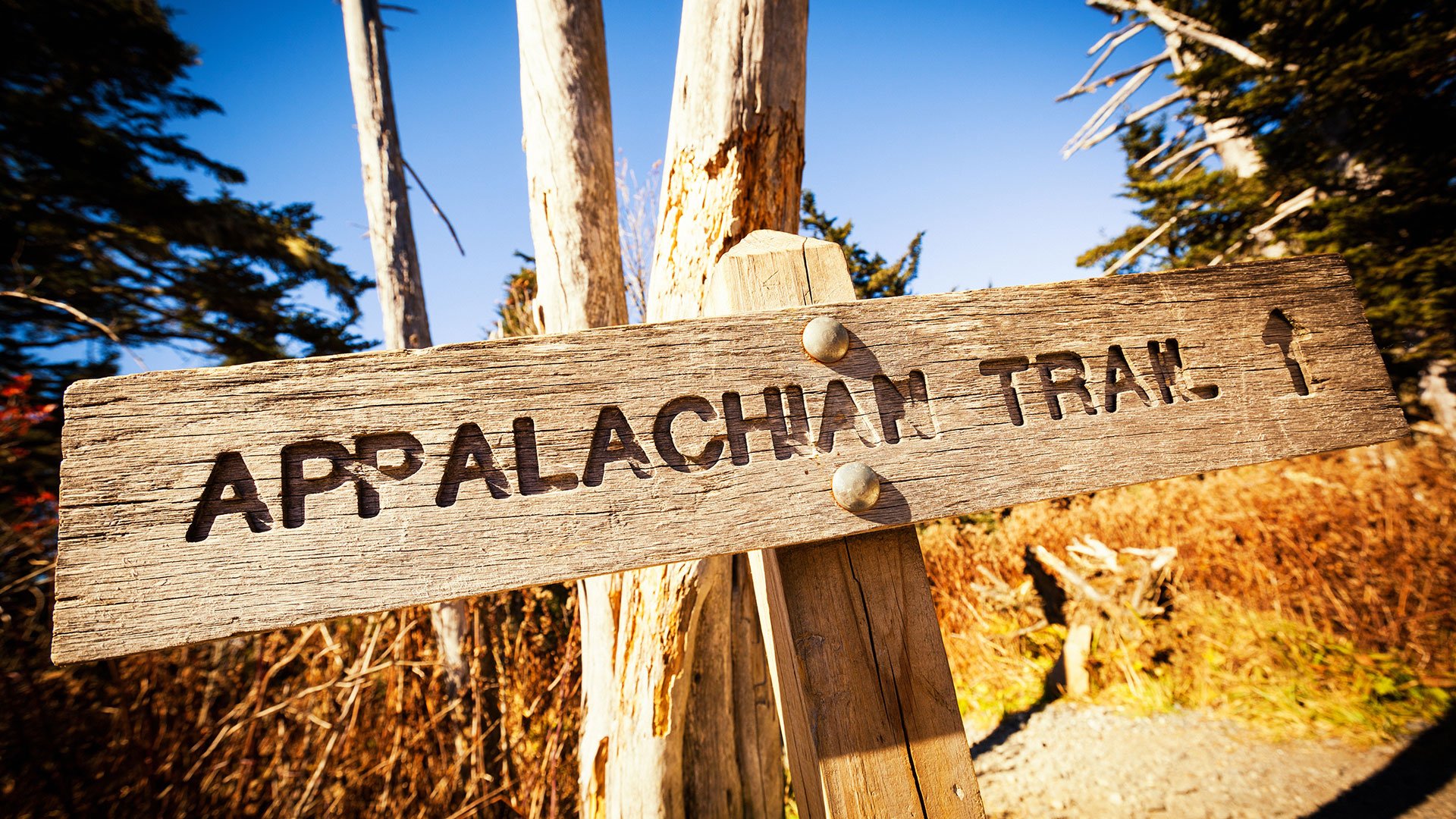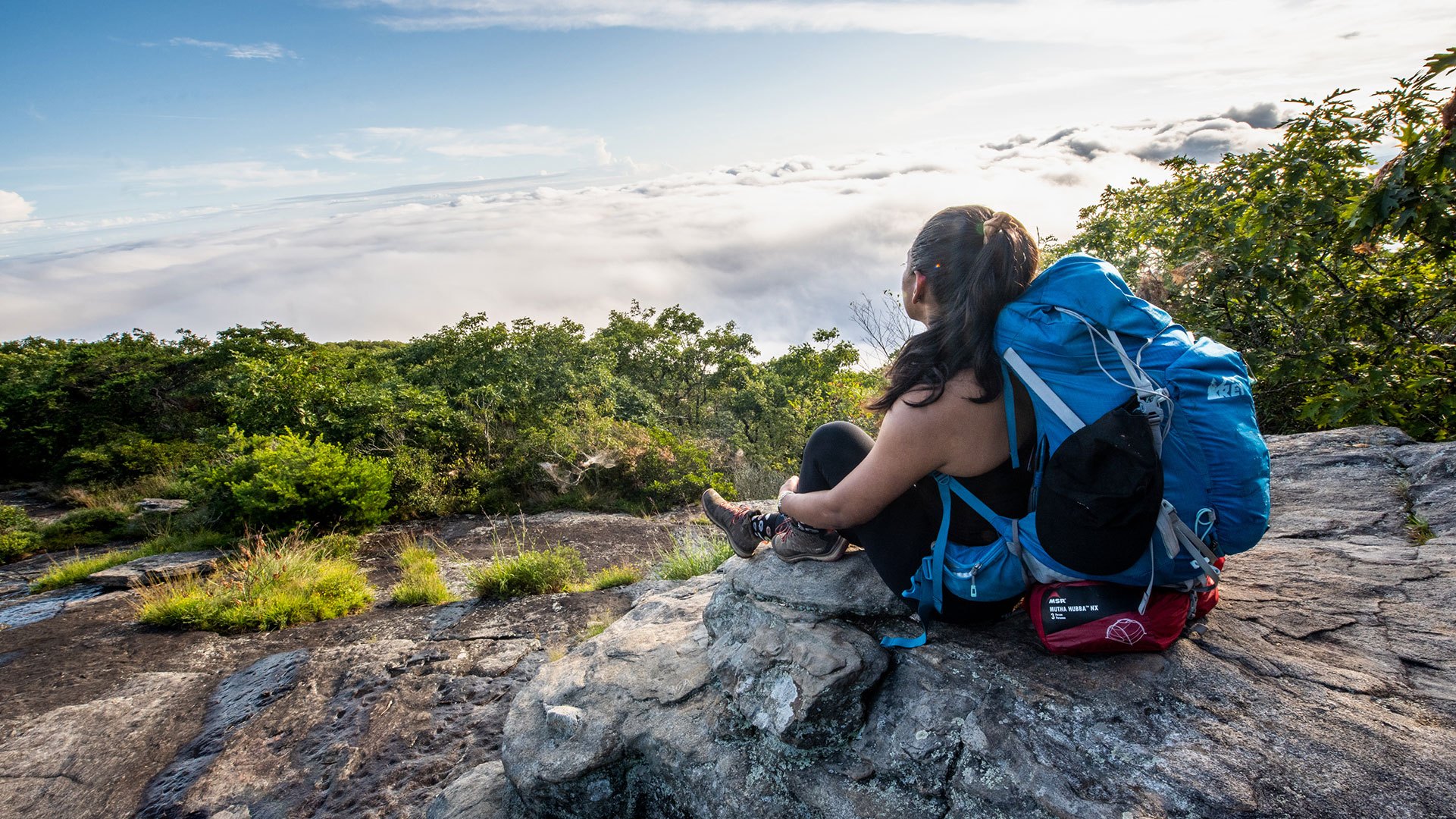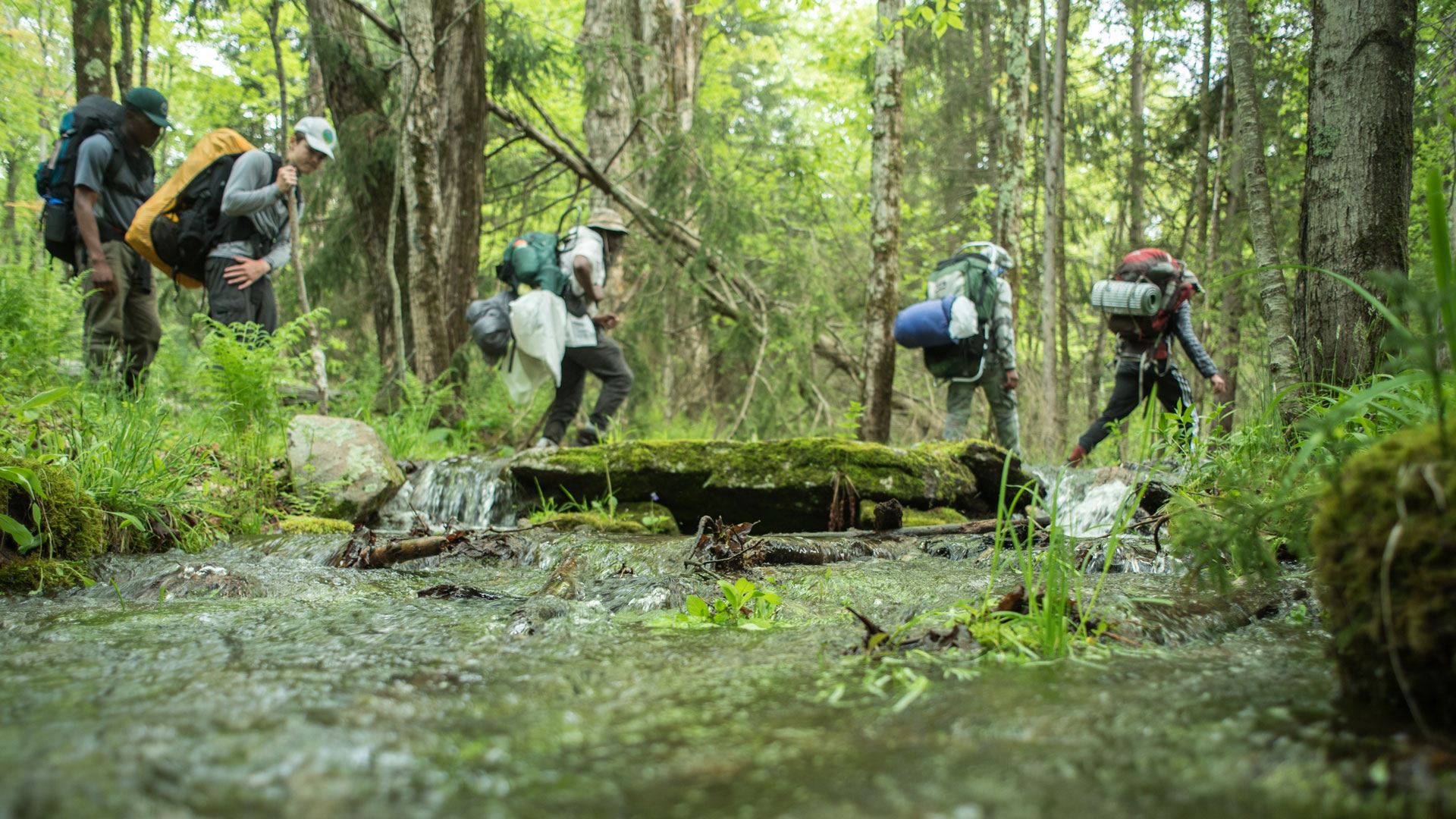By Anne Sentz, ATC Landscape Partnership Manager
Partnering for A.T. Landscape Protection
August 13, 2020
Think back to your most recent hike on the Appalachian National Scenic Trail (A.T). You feel the footpath under your feet and take note of the packed dirt, rough rocks, or gooey mud as you walk. The natural world surrounds you, and amidst the quiet, you pick out a beautiful bird song (or wave away a not-so-beautiful buzzing fly). You reach a mountain summit, and your face — sweaty with exertion — reflects the surprise and awe you experience as you take in the layers of mountains and pristine forests, feeling like you are a giant overlooking a very large world. If you spend the night outside, you might spot constellations normally hidden by light pollution. Your view of the world begins to open.
And just as your world begins to open, so does your perspective. As you walk through different communities, you find yourself meeting and talking with new people. Local business owners share their goods — and their kindness — and you are energized, reminded of those small things in life that make it so… great.
We can enjoy all the Trail has to offer for a couple of hours or a few months, and often that enjoyment takes root, blossoming into a full-blown love for a 2,193-mile path that embodies an experience only available on the A.T. But what does it take to ensure that experience remains?
In short: a massive amount of collaboration and shared dedication between individuals, communities, government agencies, and organizations like the Appalachian Trail Conservancy (ATC).
The A.T. is a unit of the National Park Service, but its boundaries are unlike other units: there is no entrance or exit gate, and the narrow footpath, marked with its iconic white blazes, spans state boundaries, county lines, town limits and numerous local, state and national public land areas. Some people fondly (and correctly) refer to the A.T. as not only our nation’s longest and skinniest National Park Unit, but also one of the most complicated parks to manage in the world.
Yet with those cross-border administration challenges comes a unique opportunity. Its managers — and its supporters — must collaborate closely and understand that the A.T. is much more than an isolated footpath in the woods.
The Appalachian Trail Landscape Partnership — also known as the ATLP — is the voice of A.T. landscape conservation. As far as collaborative networks go, this is an important one: it is co-led by the ATC and the National Park Service, and it includes close to 100 conservation partners from Maine to Georgia dedicated to greater A.T. protection. Since the Partnership’s beginning in 2015, the group has worked to:
Increase the pace and scale of land conservation along the Appalachian Trail
The ATLP works diligently to identify high-priority lands along the A.T. that must be protected forever. Lands are given a priority based on their conservation values: for example, is a particular tract of land resilient to the impacts of climate change? This is important because, without the protection of resilient sites, the A.T. landscape will no longer be able to support the varied species and ecosystems that make the Trail so special (and vital).
Once high-priority lands are identified, the Partnership builds strategies to advance land protection in (and beyond) those areas. This is only one example of collaborative conservation, which is crucial to protecting a landscape as large as the Appalachian Mountain Range.
Position the A.T. landscape as a national and global resource
The A.T. is an iconic recreation destination, but it is also a landscape that can protect the air, water, soil, flora, and fauna invaluable not only to preserving the A.T. experience, but also for conserving the greater ecosystems surrounding the Trail. Working in conjunction with our partners, the ATC is leading the charge when it comes to protecting the largest climate-resilient corridor in the most densely populated area in the United States. Through scientific analysis, targeted fundraising efforts, and transparent communication and collaboration, the ATC and its partners can protect these vulnerable lands before it is too late, ensuring that resilient sites are safeguarded, high-quality habitats remain, and clean air and fresh water are available to all living things.
Ensure the benefits of a protected landscape are available and accessible to all people
The natural beauty available to us within the A.T. landscape should not be taken for granted. Indeed, everyone should be able to experience something that creates such powerful connections between humans and nature. Land conservation efforts that increase recreational access is an important part of ATLP efforts. Just as the ATLP is invested in ensuring the Trail and its landscape remains an iconic public resource, it also recognizes we must adapt to shifting demographics and evolving partnerships. Collaborating with new partners who haven’t had a seat at the land conservation table is one step forward. Still, there is much work to be done, and a renewed commitment to this work is an important component of the ATLP’s strategic plan.
The A.T. landscape is as essential a part of the Trail experience as the footpath itself, inspiring millions each year, providing natural habitats for native species, and creating important buffers against climate change and rapid development. The work of the ATLP helps ensure that this landscape remains for years to come, as accomplishing something of this magnitude is only achieved through a coordinated conservation effort.
By supporting the ATC, you support our collaborative conservation work and all we do alongside partners to protect the larger A.T. landscape. The experience you know and associate with the Trail depends on everyone working together with this common goal in mind.
Discover More
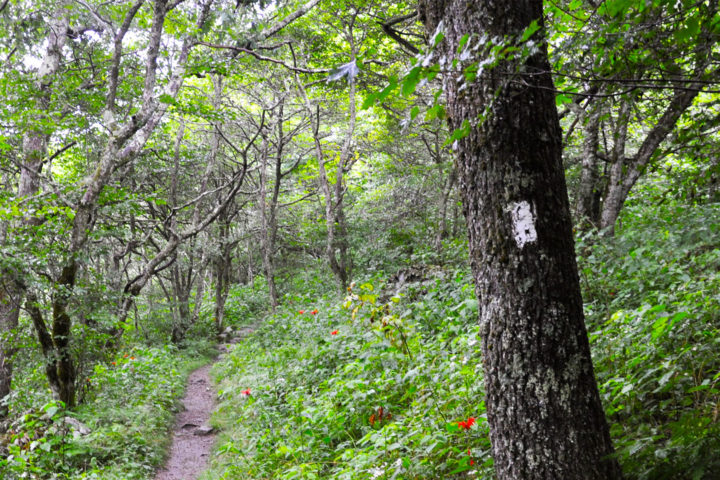
Stay Safe and Healthy
Responding to COVID-19
Learn how ATC is working to help mitigate the spread of COVID-19 on the Appalachian Trail.
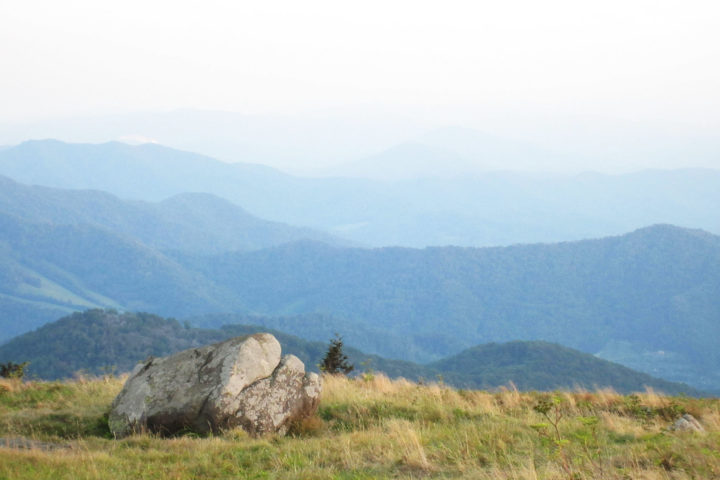
The A.T. Landscape Partnership
A Dynamic Approach to Landscape Conservation
The Appalachian Trail Landscape Partnership is a dedicated coalition of local, state and federal partners led by the Appalachian Trail Conservancy and the National Park Service.
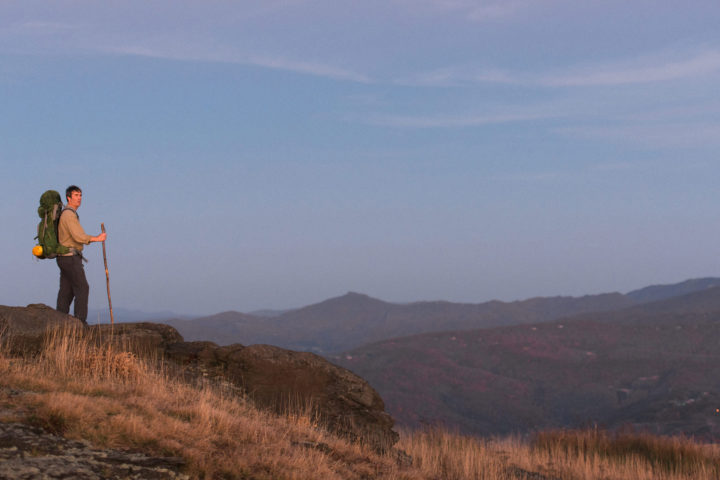
ATC's Official Blog
A.T. Footpath
Learn more about ATC's work and the community of dreamers and doers protecting and celebrating the Appalachian Trail.

